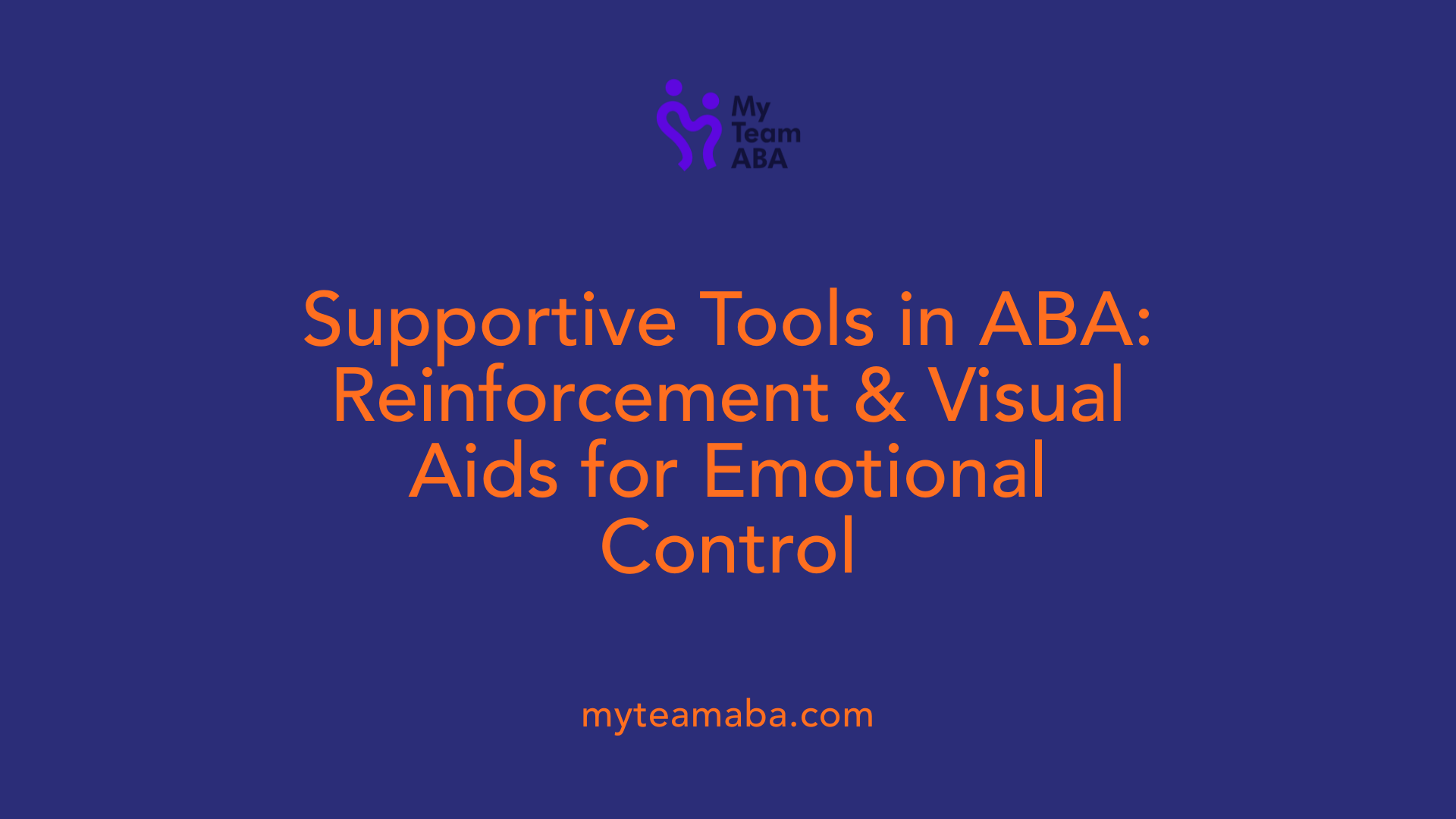How ABA Therapy Can Help with Emotional Outbursts
July 24, 2025
Managing Emotional Outbursts Effectively with ABA

Understanding How ABA Therapy Supports Emotional Regulation
Emotional outbursts, including anger and frustration, are common challenges faced by individuals with autism and other developmental disorders. Applied Behavior Analysis (ABA) offers a structured and evidence-based approach to managing these behaviors, focusing on skill development, trigger identification, and behavioral modification. This article explores how ABA therapy can help individuals regulate their emotions, reduce tantrums, and develop healthier responses through a variety of tailored strategies.
Techniques and Strategies in ABA for Managing Emotional Outbursts

What techniques and strategies are employed in ABA therapy to manage emotional outbursts?
ABA therapy applies a range of practical techniques to help individuals better manage their emotional responses, especially anger and frustration. Central to this approach is the use of Functional Behavior Assessments (FBA). These assessments identify specific triggers—such as sensory overload, communication difficulties, or social frustrations—that lead to emotional outbursts.
Based on FBA findings, personalized behavior intervention plans are developed. These plans aim to replace maladaptive behaviors like aggression with functional, acceptable alternatives. For example, a child might be taught to use words or request a break instead of acting out physically.
Teaching emotional recognition is another critical element. Visual supports like emotion charts or social stories help children recognize and label their feelings. Role-playing and modeling promote understanding of social cues and appropriate responses.
Self-regulation strategies are introduced to help children calm themselves before emotions escalate. Techniques like deep breathing, sensory breaks, or using calming tools are common. These tools help children learn to manage stress, anxiety, and anger effectively.
Antecedent modifications are proactive steps to prevent triggers from occurring. Visual schedules, warning signals, or environmental adjustments help reduce surprises or overwhelming stimuli that might lead to outbursts.
Reinforcement strategies are consistently used to encourage desirable behaviors. Positive reinforcement, such as praise or rewards, strengthens coping mechanisms and emotional regulation skills. Differential reinforcement may involve ignoring tantrums while rewarding calm behaviors.
Overall, these strategies work synergistically to reduce emotional outbursts, promote self-awareness, and foster emotional resilience in individuals with autism.
The Role of Positive Reinforcement and Visual Supports in Emotional Regulation

How do positive reinforcement principles support emotional regulation?
Positive reinforcement is a fundamental aspect of ABA therapy that encourages children to develop and maintain desirable emotional and behavioral responses. When a child displays appropriate ways of managing their emotions—such as calming down after feeling angry—these behaviors are immediately praised or rewarded. This reinforcement makes it more likely that the child will repeat these positive behaviors in future situations.
For example, a child who uses deep breathing to calm down might receive a verbal praise or a small reward. Over time, this helps establish a pattern where the child naturally adopts healthier ways to handle upset feelings. Reinforcements solidify learning and motivate children to practice self-regulation skills.
What are visual support tools and aids?
Visual supports include a variety of tools designed to make emotions and routines more concrete. These aids help children understand complex feelings and social cues, which can be especially difficult for individuals with autism. Emotion charts, picture schedules, and thermometer scales are common visual tools used in ABA therapy.
Emotion charts display different facial expressions and labels, helping children recognize and identify their own emotions. Thermometer scales visually depict the intensity of feelings like anger or frustration, teaching children to gauge how strongly they are feeling.
How do emotion charts and thermometer scales assist emotional control?
Emotion charts serve as accessible references for children to communicate their feelings without needing to speak. They can point or select expressions that match their emotional state, increasing self-awareness.
Thermometer scales provide a visual cue of emotional intensity, helping children recognize when their feelings are escalating. This awareness is crucial in managing emotions before they become overwhelming. By learning to interpret these visual cues, children can better regulate their responses.
Why is routine establishment important in emotional regulation?
Consistent routines create a predictable environment, reducing uncertainty and anxiety that often trigger emotional outbursts. Visual supports like schedules clarify daily activities, helping children anticipate transitions and plan their responses.
Establishing routines helps build stability, so children feel safer and more in control. This sense of predictability minimizes feelings of powerlessness, which are common sources of anger and frustration. Consequently, routines support smoother emotional regulation.
How does promoting independence and self-awareness contribute?
Encouraging children to recognize their own emotions and practice self-monitoring fosters independence. Using visual supports, children learn to identify what they are feeling and choose appropriate coping techniques like taking a break or using words.
Self-awareness helps children develop a sense of control over their emotional responses. As they become more adept at understanding their feelings, they are better equipped to manage them proactively, reducing the likelihood of emotional crises.
| Technique | Purpose | Benefits | Examples |
|---|---|---|---|
| Positive reinforcement | Strengthens desired behaviors | Builds self-regulation skills | Praising calming behaviors |
| Visual emotion charts | Recognize and identify feelings | Enhances self-awareness | Pointing to |
Identifying Triggers for Emotional Outbursts through ABA

How does ABA therapy help identify triggers for emotional outbursts?
ABA therapy begins with a thorough evaluation called a Functional Behavior Assessment (FBA). This assessment is crucial for understanding what causes emotional outbursts in individuals with autism. During an FBA, therapists examine the antecedents (what happens just before a behavior), the behavior itself, and the consequences that follow. These observations, often recorded over multiple sessions, reveal patterns and help identify specific triggers.
To support emotional awareness, therapists use visual aids such as emotion charts, social stories, and emotion thermometers. These tools help individuals recognize their feelings early and understand their emotional states better. Recognizing early signs of distress, such as body language or facial expressions, allows for timely intervention.
A helpful framework used in ABA is the '4 A's': Attention, Access, Avoidance, and Automatic. This model helps determine whether a behavior aims to gain attention, get access to something, avoid an activity, or self-stimulate. Therapists can then develop strategies to modify triggers, such as changing routines or using visual cues.
Overall, by carefully analyzing behaviors and employing visual supports, ABA therapists can pinpoint the causes of emotional outbursts. This valuable insight enables them to implement targeted strategies that teach better emotional regulation and reduce the frequency of tantrums and aggressive behaviors.
Benefits of ABA for Children with Emotional Outbursts
ABA (Applied Behavior Analysis) therapy offers several advantages for children who experience emotional outbursts such as tantrums or aggression. A fundamental part of ABA involves teaching children coping and self-regulation skills. These include recognizing signs of anger or frustration early, practicing deep breathing, and taking sensory or calming breaks. Visual supports like emotion charts also help children identify and understand their feelings.
One of the main benefits of ABA is its ability to address the emotional triggers that lead to outbursts. Through Functional Behavior Assessments, therapists identify specific triggers—such as sensory overload or communication difficulties—and develop targeted strategies. Replacing maladaptive behaviors with functional alternatives, like asking for a break or using words to express needs, significantly reduces the frequency and intensity of tantrums.
Improved communication is another key focus. As children learn to express their needs more clearly through speech, sign language, or visual aids, their frustration diminishes. This proactive approach not only lessens emotional episodes but also enhances social skills. Children become more independent in managing their emotions and navigating social situations.
Family and caregiver involvement is crucial. Training in ABA strategies ensures consistency and reinforcement at home and in other settings. When caregivers implement similar techniques—such as positive reinforcement, setting clear expectations, and redirection—they create a supportive environment conducive to long-term emotional regulation.
In summary, ABA therapy promotes emotional resilience by teaching children how to recognize emotional cues, use calming techniques, communicate effectively, and develop skills that lead to reduced emotional outbursts and better overall well-being.
Fostering Emotional Regulation for a Brighter Future
ABA therapy provides a comprehensive framework for helping individuals manage their emotional outbursts. By systematically identifying triggers, teaching emotional recognition, employing reinforcement and visual tools, and involving families, ABA creates meaningful change. As a result, children and adults gain important skills that promote emotional stability, reduce tantrums, and lead to a more confident, independent life. With ongoing support and tailored interventions, ABA continues to be a vital resource in fostering emotional well-being.
References
- Applied Behavior Analysis (ABA): Unveiling its Impact
- Simple Ways ABA Therapy Helps Reduce Tantrums Fast
- Navigating Emotional Outbursts with ABA Therapy Techniques
- ABA Therapy's Impact on Emotional Regulation
- Applied Behavior Analysis in Anger Management Therapy
- Simple evidence-based strategies for teaching emotion regulation?
- Emotion Regulation: Concepts & Practice in Autism Spectrum Disorder
- Practical Strategies to Teach Emotional Regulation Skills in ABA ...
